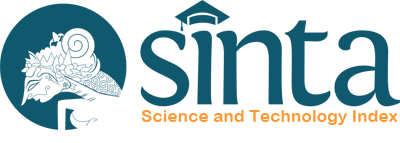Studi Fenomenologi Perundungan di Sekolah Dasar dan Upaya Pencegahannya melalui Penanaman Nilai-Nilai Pancasila
DOI:
https://doi.org/10.28918/ijiee.v4i1.2162Keywords:
Phenomenological study, Bullying prevention, Elementary school, Pancasila valuesAbstract
Bullying behavior is a widespread phenomenon, including in elementary schools. This behavior has serious implications that have a negative impact on the victim, perpetrator, and even the school environment. In this context, it is important to study bullying behavior in elementary schools and design prevention efforts. Researchers use a qualitative phenomenological approach to explore how this behavior occurs, then follow up by developing prevention efforts. Data collection was carried out using observation, interviews and documentation techniques. The data that has been collected is checked for validity using triangulation techniques. The results of this research reveal that: first, there are several bullying behaviors that occur in elementary schools, namely: in the form of verbal and non-verbal bullying, verbally in the form of insulting peers based on the physical factors of friends who are different from other friends, calling friends by people's names. old and so on. Meanwhile, non-verbally in the form of pinching peers or cornering peers who are considered different. Second, efforts to overcome and prevent bullying behavior in elementary school students can be done by instilling character education values in the principles of Pancasila through learning, habituation, art, and giving awards by educators to students.
References
Agustinus. (2015). Pancasila dan Multikulturalisme Indonesia. Studia Philosophica et Theologica.
Dewantara, J. A., Nurgiansah, T. H., & Rachman, F. (2021). Mengatasi Pelanggaran Hak Asasi Manusia dengan Model Sekolah Ramah HAM (SR-HAM). Edukatif: Jurnal Ilmu Pendidikan, 3(2), 261-269. https://doi.org/10.31004/edukatif.v3i2.277
Giorgi, A., & Giorgi, B. (2008). Qualitative psychology: a practice to research methods. ed. Jonathan A. Smith.
Hardjasoemantri, Koesnadi. (2000). Hukum Tata Lingkungan. Gadjah Mada University Press.
Hasan, Hamid, Said. (2010). Pengembangan Pendidikan Budaya dan Karakter Bangsa Bahan Pelatihan Penguatan Metode Pembelajaran Berdasarkan Nilai-Nilai Bangsa. Puskur Balitbang Kemendiknas.
Kaelan. (2013). Negara Kebangsaan Pancasila Kultural, Historis, Filosofis, Yuridis dan Aktualisasinya. Paradigma.
Majid, Abdul & Ardiatmaja. (2011). Pendidikan Karakter Perspektif Islam. Rosdakarya.
Moustakas, C. (1994). Phenomenological research methods. Sage.
N. Sutarna. (2018). Pendidikan Karakter Siswa Sekolah Dasar. Pustaka Diniyah.
Presiden Republik Indonesia. (2003). Undang-Undang No 20 Tahun 2003 tentang Sistem Pendidikan Nasional. Indonesia.
R. W. Hefner. (2007). Politik Multikulturalisme: Menggugat Realitas Keberagaman (B. Hidayat Trans). Kanisius.
Raharjo. (2010). Pendidikan Karakter sebagai Upaya Menciptakan Akhlak Mulia Jurnal Pendidikan dan Kebudayaan. Balitbang Kementerian Pendidikan Nasional.
S. Arliman, Laurensius. (2019). Ilmu Perundang-Undangan yang Baik untuk Negara Indonesia. Deepublish.
Sulaiman, Asep. (2015). Pendidikan Pancasila dan Kewarganegaraan. CV Arfino Raya.
Susanti. (2016). Persepsi pada B4S Stander terhadap Intensitas Bullying pada Siswa SMP. UNM.
Yulia, N. M., & Fithriyah, D. N. (2022). Pengembangan Media Pembelajaran Wayang Karakter Muslim pada Mata Pelajaran Pendidikan Kewarganegaran di MIN 3 Jombang. Indonesian Journal of Islamic Elementary Education, 2(2), 82-93. https://doi.org/10.28918/ijiee.v2i2.6270
Zubaedi. (2011). Desain Pendidikan Karakter Konsep dan Aplikasinya dalam Lembaga Pendidikan. Kencana.
Downloads
Published
Issue
Section
License
Copyright (c) 2024 Rofiatus Surul, Shaleh Shaleh

This work is licensed under a Creative Commons Attribution 4.0 International License.
You are free to:
Share — copy and redistribute the material in any medium or format for any purpose, even commercially.
Adapt — remix, transform, and build upon the material for any purpose, even commercially.
The licensor cannot revoke these freedoms as long as you follow the license terms.
Under the following terms:
Attribution — You must give appropriate credit , provide a link to the license, and indicate if changes were made . You may do so in any reasonable manner, but not in any way that suggests the licensor endorses you or your use.
No additional restrictions — You may not apply legal terms or technological measures that legally restrict others from doing anything the license permits.
Notices:
You do not have to comply with the license for elements of the material in the public domain or where your use is permitted by an applicable exception or limitation .
No warranties are given. The license may not give you all of the permissions necessary for your intended use. For example, other rights such as publicity, privacy, or moral rights may limit how you use the material.














